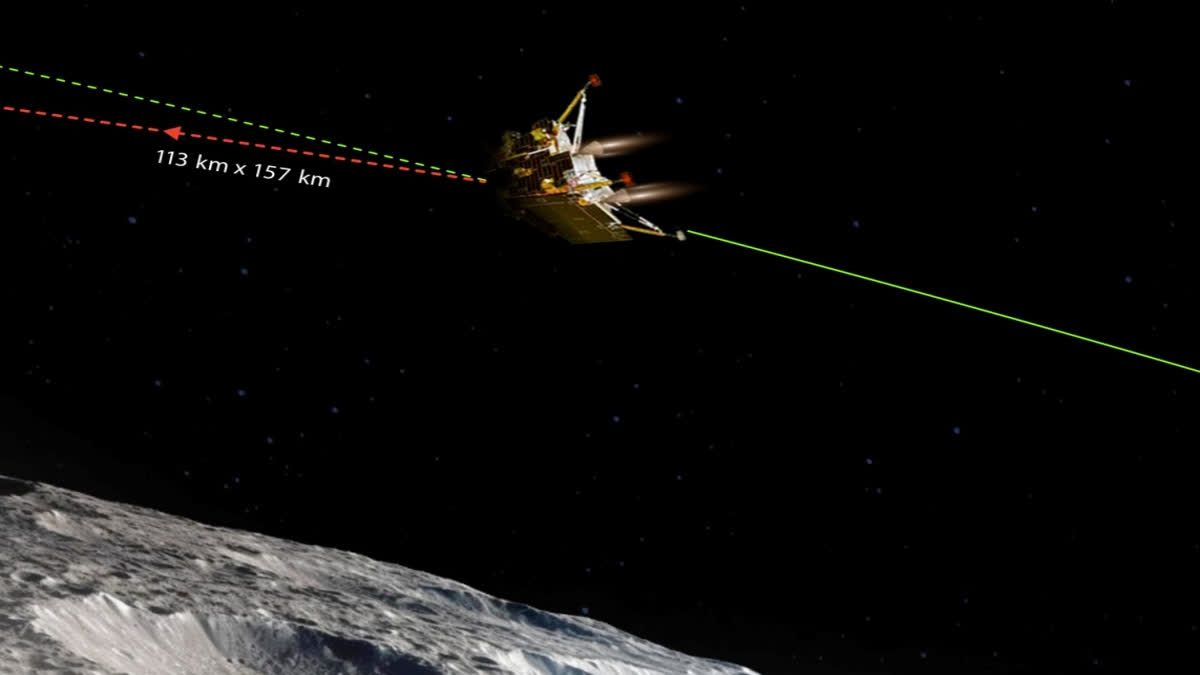Chennai: Carrying the hopes of a billion people, Vikram Lander with the Pragyan Rover, is slated for its moon touchdown on August 23. Former ISRO scientist and Chandrayan-1 Project Director Mayilsamy Annadurai explains what are the challenges ahead.
Q: Admittedly, a soft landing on the moon is a herculean task. What are the issues that are confronted in landing at the south polar region?
A: To reach and land a probe on the south pole, the prerequisite is to reach the polar orbit of the moon, which is a tough task. That is possible only by ensuring a flawless accurate orbital manoeuvre. Even then it is not enough since the terrain is treacherous, with mountain cliffs up to 9 km in height and rocks and deep craters. As such, it is necessary to land on a plain, larger enough to carry out the desired experiments. As of now we are in possession of 30 cm accuracy of the lunar surface and for scouting the landing site we depend upon the pictures that Vikram is sending.
Q: While ISRO has sent probes orbiting the moon and Mars, what are the difficulties in landing on the lunar surface?
A: First and foremost, we need a complete picture of the moon, including that of its polar regions for better understanding. It can be had only by having a probe/module on the polar orbit. All missions by the United States of America and USSR/Russia were confined to the equatorial region which has abundant sunlight unlike the polar regions of the moon which remain dark.
For landing on the lunar surface, the Lander's speed had to be reduced. It orbits the moon with a high velocity and once it is reduced, it succumbs to the gravitational pull of the moon. Hence, balancing it and overcoming it poses a major challenge. Even landing an aircraft in an airport requires so much effort and technological support in the age of Google Maps. Landing a probe on the moon which is 3.85 lakh km away at an unknown surface is not that easy given that space missions are brutally difficult.
If the Lander cannot land on a specific location or its fuel gets depleted or the battery gets dried up, the situation becomes even more challenging. All these have been taken into consideration for the secure soft landing.
Q: Given the imponderables, why is the south pole chosen for landing? Why are India and a host of nations evincing greater interest in that region?
A: As said earlier, any understanding of the moon is incomplete without a study of its polar regions. Since the previous 60 or so missions by the USA and Russia were focused on the equatorial region, Chandrayaan 1 itself was designed to be different. And, it had paid with the discovery of water on the lunar south pole. Water as frozen ice underneath and as diffused particles on the surface. It is a credit to us that Chandrayaan was the first to come up with it. In the future, if we have to bring something from the moon, we require water. Hence, our research is directed toward water resources among others.
Q: Will the Propulsion Module function as an Orbiter? What is the importance of SHAPE (Spectro- Polarimetry of Habitable Planetary Earth)? How is the Chandrayaan 2 Orbiter helping in the Chandrayaan 3 mission?
A: The propulsion module has enough fuel to last for many years. It has the SHAPE which will study the earth from the moon and also search for exoplanets beyond the solar system. The study of Earth from outer space would help it in this. The Chandrayaan 2 Orbiter is playing the role of a relay in sending signals it receives from the Rover to the ground station.



